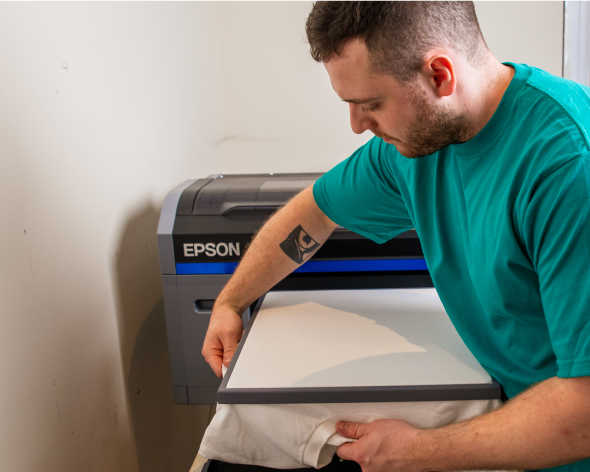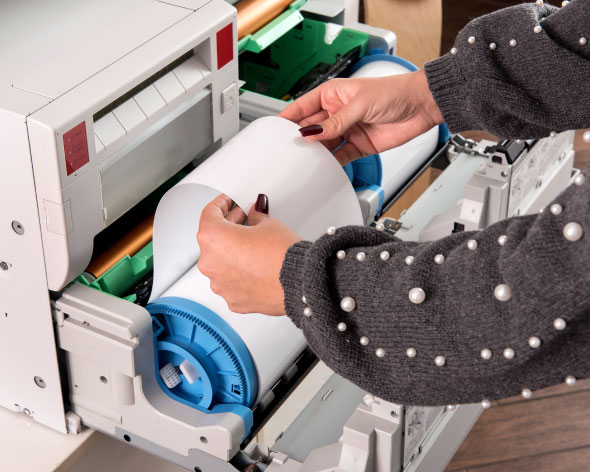Heat Transfer Vs. Sublimation
There are several printing processes used in the production of printed clothing and other products. Each method of printing has its pros and cons with regards to colour and durability.
Here we’re going to look at two types of printing, heat transfer paper and sublimation.

T-shirt Heat Transfer
This is a popular method of printing. The design is printed directly onto the heat transfer paper via a printer. It is then placed over the clothing or product and heat is applied to transfer the design onto the surface.
Once the heat has been applied for the correct amount of time, you peel the backing away and are left with a customised item.
Pros
- Heat transfer paper is very easy to do and is less expensive than a lot of other print production processes.
- The process works on most fabrics, including polyester mixes and cotton. It’s just as effective on light and dark fabrics.
Cons
- Heat transfer paper lays on top of the shirt, creating an extra layer that can be felt. It is not particularly durable and can crack and peel with multiple washes.
- Unless you have your design trimmed of all excess paper (weeding), you will be able to see the white background around your design.

Sublimation Printing
On the surface, sublimation and heat transfer paper are similar printing techniques. They both use specialist papers on to which the design is printed. Heat is then used to transfer the design to the T-shirt.
That’s where the similarities end. The ink used in sublimation turns into a gas when heated and is embedded into the polyester fabric. Once it has cooled down, it returns to its solid-state and is bonded to the fabric.
This type of printing has several advantages. For instance, sublimation printing feels just like the original fabric and is extremely durable. Unlike heat transfer paper, it can also be used on other types of product such as mugs and coasters.
Pros
-
The quality of sublimation printing is excellent. It bonds to the fabric so that you feel no difference between the ink and the fabric.
-
It is also extremely durable and will withstand multiple washes. You can also use this printing technique on other products too.
-
The range of colours you can achieve is a lot greater than with heat transfer paper. So if you want to print a photo or a company logo, this is your best option.
-
You don’t need to worry about weeding when it comes to sublimation. This is the removal of the paper around the print, so there is no white background on the design.
Cons
- While you might think that sublimation is the best option, it does have some limitations. For example, it cannot be used on pure cotton as it cannot adhere to the fabric. For best results you need 100% polyester, or as close of a blend as you can get.
- Sublimation is also only effective on light coloured fabric, limiting the range of colours your can get.
Key Points
So, as you can see from the information above, there is not ‘better’ way to print on t-shirts. The best printing technique for your particular project will depend on your budget, the type of garment you want to be printed-shirt material and the colour.
Enquire on our website or call your clothing printers on 0116 389 0130
